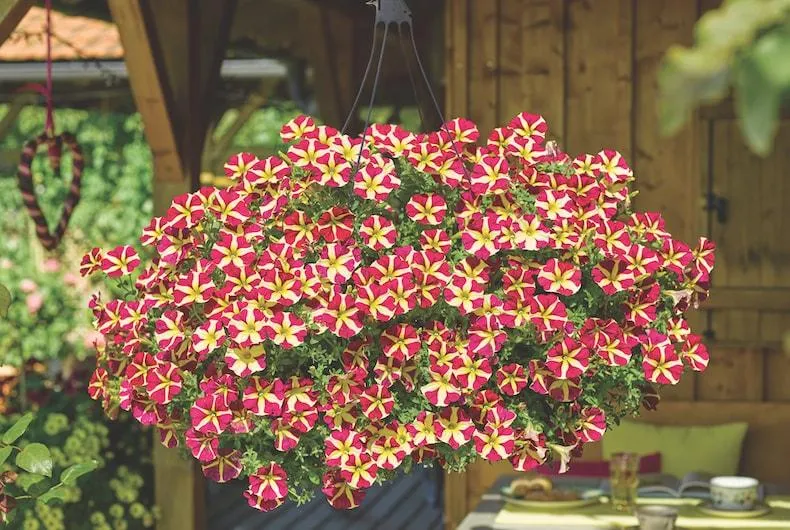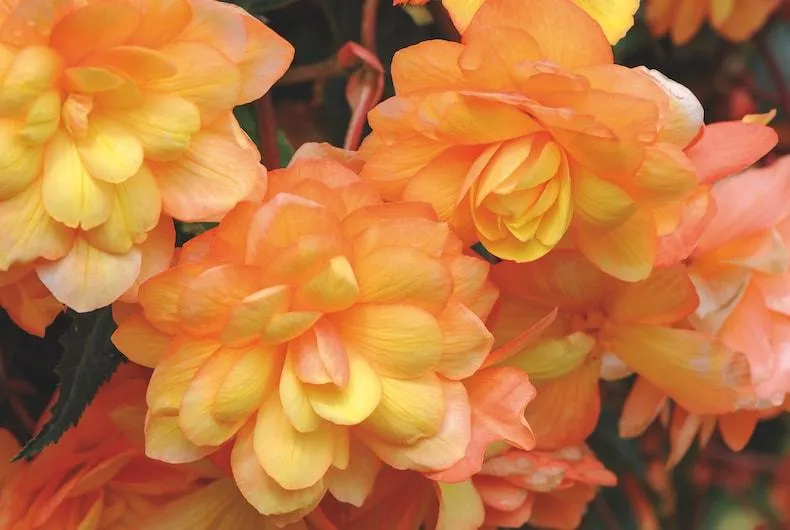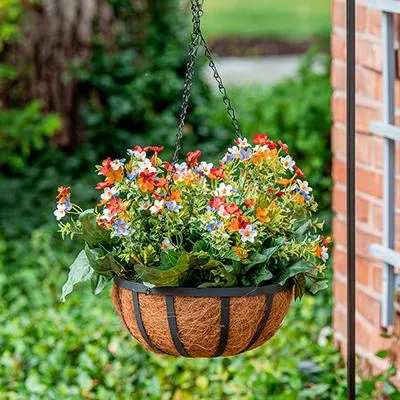The Ultimate Guide to Cascading Plants
Whether you’re looking to hang flowering vines from a patio ceiling or cascade greenery over the edge of a planter, cascading plants can beautifully transform outdoor spaces. As an avid gardener, I’ve spent years experimenting with different trailing varieties to learn which ones thrive best in my conditions. In this article, I’ll share everything you need to know to select and care for cascading plants that will bring perpetual charm to your yard or balcony.
Popular Options for Cascading Plants
From my experience, these are some of the best cascading plants for different situations:
- For hanging baskets in full sun, try petunias, bead plants, or fuchsias. Their cascading flowers burst with color all summer long.
- Ivy geraniums perform well in partial shade and trail beautifully over the edges of containers. Their leaves come in various colors and patterns too.
- English ivy spreads quickly and thrives in shade, smothering trees, fences, and walls with rich greenery when planted at their bases.
- For tropical flair, Golden Allamanda vines sport sunny yellow blooms that seem to go on forever. But give them warmth and protection from frost.
- If you want evergreen foliage cascading year-round, consider periwinkle, sweet woodruff, or one of the many variety of creeping Jenny.
Tips for Planting Cascading Plants
No matter which variety you choose, follow these tips for planting cascading plants that thrive:
- Select a location that receives the amount of sun stated on the plant’s tag. Too much or too little light can cause legginess or lack of blooms.
- Make sure the soil drains well so roots don’t rot. Amend clay-like soils with compost or bark to improve drainage and aeration.
- Use a hanging basket, tall pot, or window box and fill it nearly to the top with quality potting mix.
- Gently remove each plant from its nursery pot and loosen any tangled or tightly wound roots before placing it near the basket edge.
- Water well after planting and be sure the soil remains consistently moist as the plants establish themselves.
By following these steps, you’ll set your new cascading plants up for vigorous growth and lush flowering all season long. The key is giving them optimal care from the start.
Ongoing Care Tips
Once planted, cascading plants still need regular TLC to maintain their beauty. Here are some tips I’ve learned:

- Water early in the day so foliage dries by nightfall to prevent diseases. But be careful not to overwater – too much moisture can lead to root rot.
- Fertilize every other week in spring and summer using a balanced, water-soluble plant food. The boost will encourage abundant blooms.
- Pinch back leggy growth throughout the season to encourage bushier growth and more flowers developing near the basket edges.
- Check plants regularly for pests and remove infected leaves or stems promptly to prevent infestations. Common issues are aphids, spider mites and powdery mildew.
- Before winter arrives, cut back deciduous vines by 2/3 their size and bring pots indoors before freezing temps or add winter protection if leaving outdoors.
With a little TLC each week, your cascading plants will reward you with months of vibrant color, texture, and greenery. Just be sure not to neglect their needs like watering or problems can surface basically overnight.
Dealing With Pests and Problems
No matter how diligent your care, some pests or diseases might strike cascading plants from time to time. Here are suggestions based on my experience for handling common issues:
- Aphids are sort of the bane of many gardens. Use insecticidal soap or neem oil spray to smother colonies on new growth. Repeat weekly as needed.
- Spider mites may appear as fine webbing on leaf undersides in hot, dry spells. Spray plants thoroughly with strong stream of water to dislodge pests before treating with horticultural oil.
- Powdery mildew shows up as a white, fluffly fungus during humid weather. Prune away infected areas and improve airflow. Baking soda sprayed weekly may help prevent recurrence.
- Check for wilting which could indicate root rot from too much moisture. trim off mushy portions and repot in fresh, well-draining soil once plants are dry.
- Whiteflies and leafhoppers can be controlled using insect netting stretched over hanging baskets until infestations clear up.
While occasional pest problems will probably occur through no fault of your own, following prevention practices and swiftly addressing issues will stem further damage. With some TLC, your cascading plants will Bounce right back, no sweat.
Propagating and Overwintering Cascading Plants
Thanks to their trailing habits, cascading plants make propagating and overwintering them relatively straightforward compared to more upright varieties:
- In late summer, take 4-6 inch softwood cuttings, remove lower leaves, and root them in damp potting mix. Keep humid and bright to reduce shock.
- For tender annuals like begonias and fuchsias, overwinter indoors in a sunny windowsill or under grow lights. Prune back for bushy regrowth each spring.
- With hardy vines like ivy and periwinkle, simply bury pots into the garden soil before first frost to protect roots and re-emerge unscathed in warmer months.
- Take rootbound containers inside before freezing and repot vines into larger pots next spring for continued growth. Divide congested clumps every 2-3 years too
Propagating allows enjoying new plants without spending a mint. With some handy tricks, your prized cascading plants can basically go dormant in winter then spring back to life year after year, like clockwork.

Final Thoughts
Whether filling a patio with vibrant color or draping delicate foliage from above, cascading plants add graceful dimension to outdoor spaces. By matching plants to conditions and following care tips summarized here—like give them enough light, keep soil moist, and tackle any pests swiftly—you too can experience the joys of these glorious trailing wonders. So get out there and start planning hanging baskets and draping arrangements that will enchant you all season! Just let me know if you have any other questions.
Top 5 Cascading Houseplants
| Plant | Care Level | Light Needs | Growth Rate | Maximum Height |
|---|---|---|---|---|
| English Ivy | Low | Low to Medium | Fast | Unlimited, will cling to surfaces |
| Pothos | Low | Low to Bright Indirect | Medium | 6-10 feet when climbing |
| Spider Plant | Low | Bright Indirect to Direct | Medium | 2-3 feet |
| Philodendron | Low | Low to Medium | Medium | 6-10 feet when climbing |
| Ponytail Palm | Low | Bright Indirect | Slow | 2-6 feet |
FAQ
-
What plant grows fast?
Kinda plants grow at a rapid pace are vines like tomatoes. They basically cling onto other stuff and use it to boost themselves upwards quickly. Ivies is another one – they sort of take over everything if you don’t control them!
-
Do cascading plants need full sun?
Most cascading plants love lots of sunlight. However, some will grow in partial shade. It depends basically on the type of plant. Ferns perhaps do okay with less sun. But for tomatoes and petunias, they need full sun amost all day to look their best and provide good growth. You want to check the requirements for whatever plant you choose.
-
How do I get a plant to trail over a railing?
To get a plant to go over the edge of a railing or wall, you start by securing it high up. Put it in a heavy pot, and use green garden ties or twist ties to attach it to the railing. As it grows, you kind of just let it hang down. You may need to help train it at first so it goes in the direction you want. Eventually it will think, “hey this is the way down,” and continue trailing below on its own.
-
What’s the best soil for cascading plants?
Experts say a well-draining soil is important for hanging baskets and cascading planters. The soil shouldn’t stay soggy. A potting mix for containers works well. It’s usually a blend of things like peat moss, perlite, and compost. This mix dries out faster than regular garden soil. Another option you could try is to add some sand or gravel to the bottom of the pot to aid drainage, just in case water has nowhere else to go.

-
How often do I water cascading plants?
The frequency of watering really depends on the type of plant, the size of the container, and how much sun it’s getting. A good rule of thumb is to check the soil each day – stick your finger in to see if the top inch or two is dry. Water thoroughly whenever this layer becomes dry. In hot weather, hanging baskets may need water every day, while shadier spots could go longer between waterings. The best way is kinda to just pay attention to every plants individual needs.
What’s the best way to fertilize hanging baskets?
Most experts suggest using a water soluble fertilizer for hanging baskets and other container plants. Look for a product labeled for blooming plants or vegetables – these are formulated to provide nutrients throughout the growing season. Basically just follow the package instructions and fertilize once a week during the growing months. You could also use a slow release fertilizer spikes that gradually feed the plants for months. However ya gotta replace them before they’re fully used up otherwise the plants may get stunted. Always wear gloves when working with fertilizers.
How do I keep cascading plants healthy?
Besides watering and feeding appropriately, there are some other things you can do to keep your cascading plants happy and healthy. Removing any dead or diseased material helps. It’s also good to pinch back leggy growth sometimes to encourage bushiness. Providing adequate sunlight is important too – perhaps moving the planter to follow the sun. Also, protecting from harsh weather, pests and diseases. I find neem oil works wonders! Lastly, Admiring your handiwork is good for the soul – scientific fact folks!
What cascading plants thrive in part shade?
Some good options for part shade include English ivy, lush green ferns, and impatiens. Ivy will basically take over anything given enough time haha. But it looks lovely tumbling down. Ferns have an almost prehistoric appeal and add tropical flair. Impatiens come in varied bright colors that spruce up any shady nook. You could also try begonias, periwinkle, or sweet potato vines if sun isn’t abundant. Just see what does best at your place with the light conditions. Trial and error sometimes leads ya to amazing discoveries!
How do I winterize hanging baskets?
Once temperatures start dropping in fall, hanging baskets and other containers will need to be prepared for winter. Basically you have a couple choices – bring potted plants inside or discard them. If keeping them, cut them back hard, remove from baskets, and plant in the ground or large pots. Give them less water and fertilizer as they go dormant. Another option is to place whole baskets in shed or garage if big enough. You can also kinda overwinter tropical plants like petunias indoors as houseplants if they’re special to you. Either way, a haircut serves them well for the colder months ahead!

